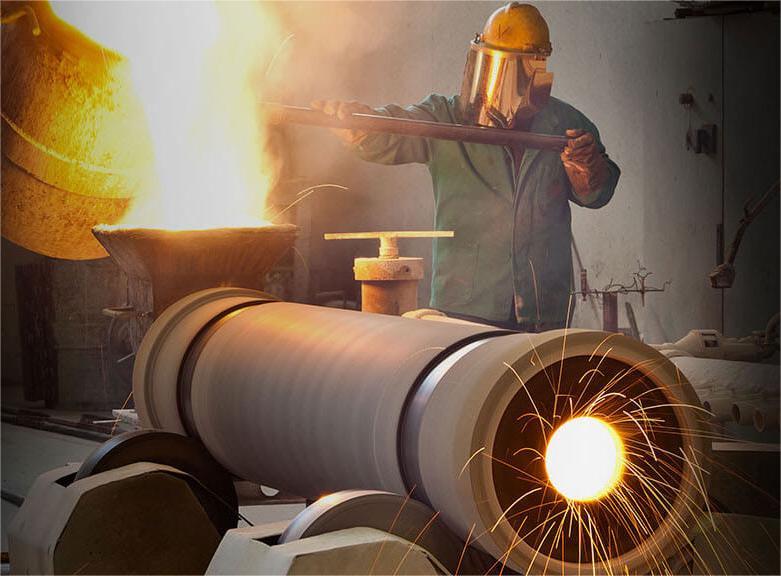Cast iron pipes have been produced through various casting methods over time. Let’s explore the three main techniques:
- Horizontally Cast: The earliest cast iron pipes were horizontally cast, with the core of the mold supported by small iron rods that became part of the pipe. However, this method often resulted in uneven distribution of metal around the pipe circumference, leading to weaker sections, particularly at the crown where slag tended to collect.
- Vertically Cast: In 1845, a shift occurred towards vertical casting, where pipes were cast in a pit. By the end of the 19th century, this method became standard practice. With vertical casting, slag accumulated at the top of the casting, allowing for easy removal by cutting off the end of the pipe. However, pipes produced this way sometimes suffered from off-center bores due to the core of the mold being positioned unevenly.
- Centrifugally Cast: Centrifugal casting, pioneered by Dimitri Sensaud deLavaud in 1918, revolutionized cast iron pipe manufacturing. This method involves rotating a mold at high speeds while molten iron is introduced, allowing for uniform metal distribution. Historically, two types of molds were used: metal molds and sand molds.
• Metal Molds: In this approach, molten iron was introduced into the mold, which was spun to distribute the metal evenly. Metal molds were typically protected by a water bath or spray system. After cooling, pipes were annealed to relieve stress, inspected, coated, and stored.
• Sand Molds: Two methods were employed for sand mold casting. The first involved using a metal pattern in a flask filled with molding sand. The second method utilized a heated flask lined with resin and sand, forming the mold centrifugally. After solidification, pipes were cooled, annealed, inspected, and prepared for use.
Both metal and sand mold casting methods followed standards set by organizations like the American Water Works Association for water distribution pipes.
In summary, while horizontally and vertically casting methods had their limitations, centrifugal casting has become the preferred technique for modern cast iron pipe production, ensuring uniformity, strength, and reliability.
Post time: Apr-01-2024




